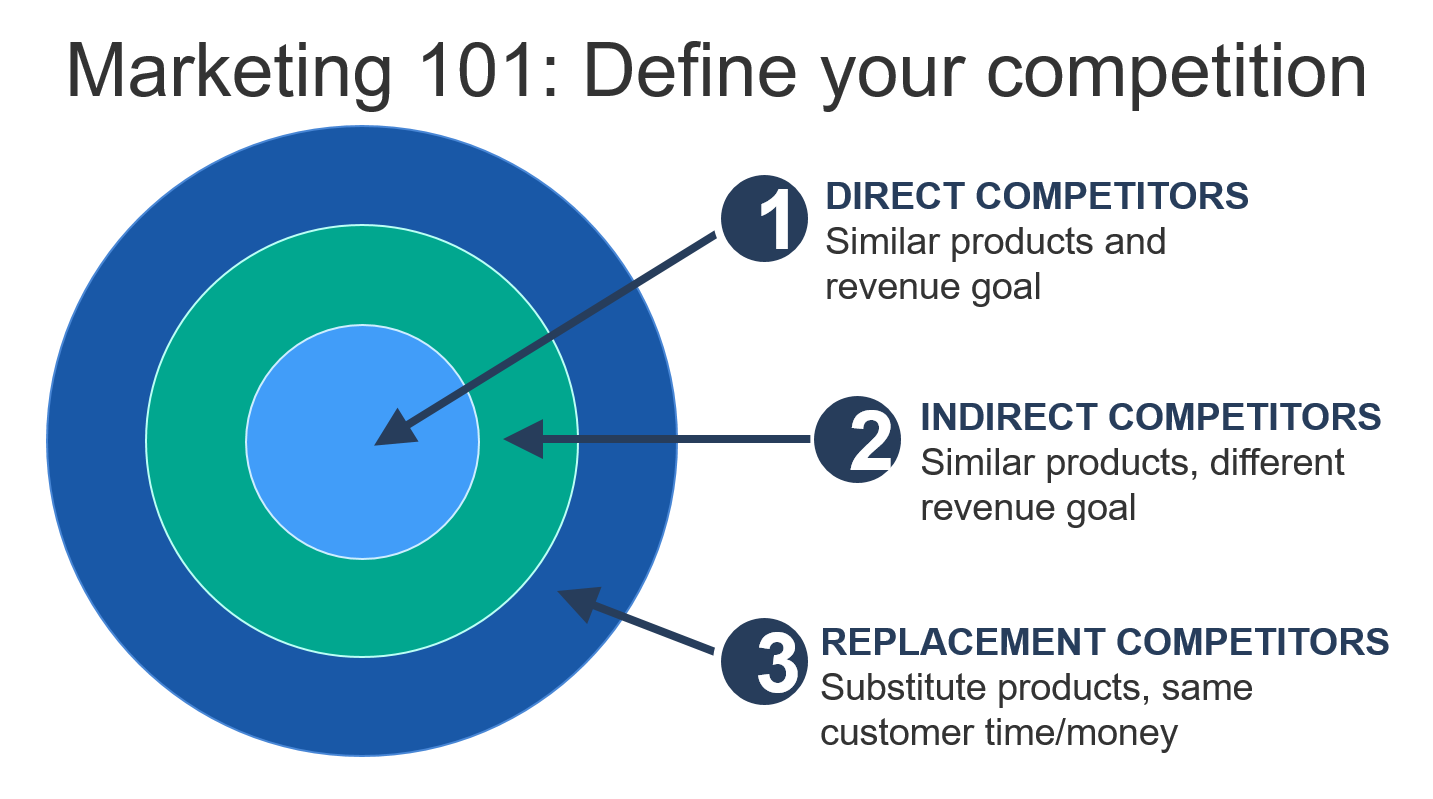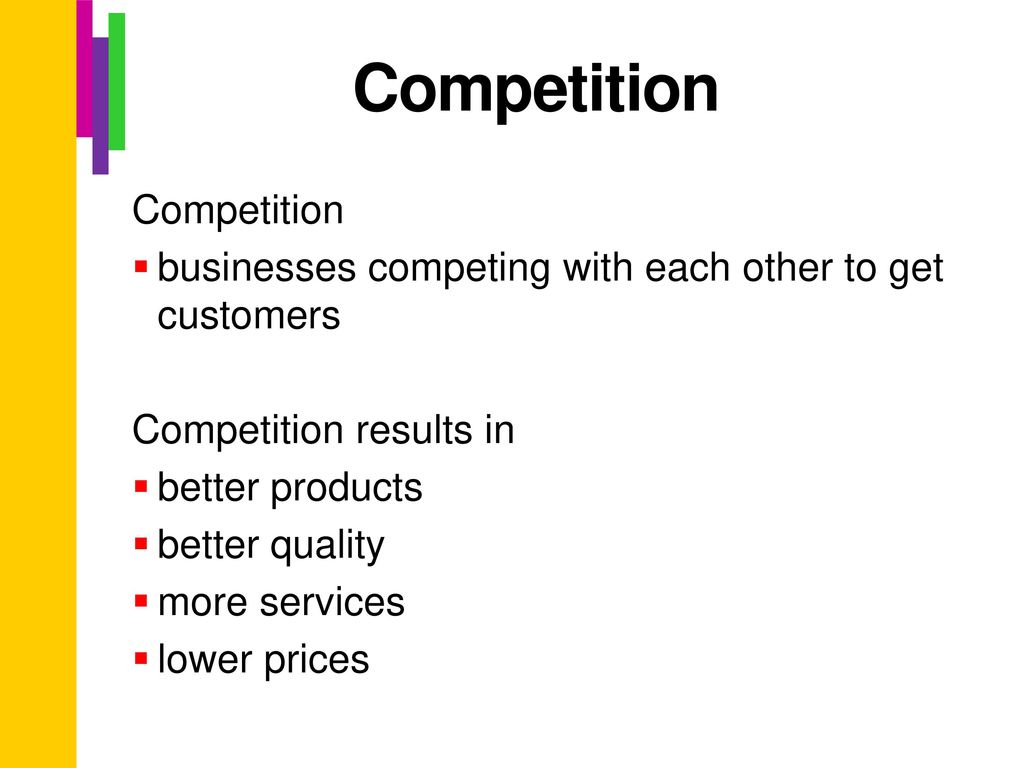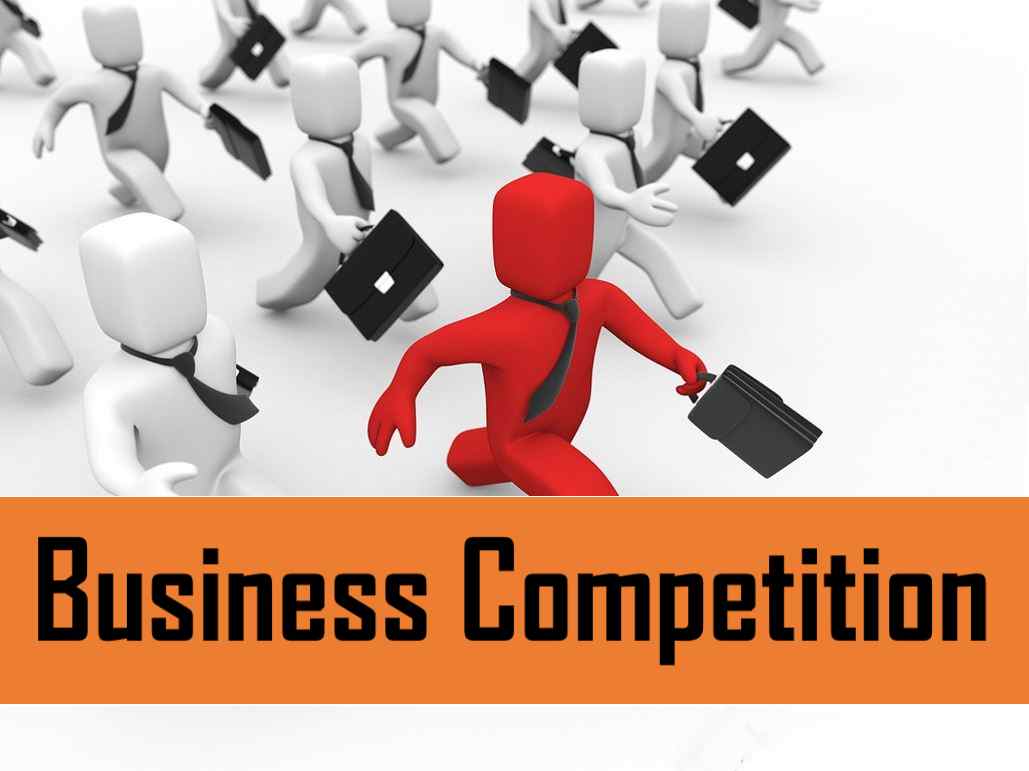How Do Business Compete With Each Other

Imagine a bustling marketplace, sunlight glinting off vibrant stalls overflowing with goods. Merchants call out, each vying for attention, each offering something slightly different. The air crackles with a friendly rivalry, a silent agreement to push each other to be better, to offer more.
At its heart, business competition is a dynamic process where companies strive to attract customers, achieve market share, and ultimately thrive in the same arena. This article explores the multifaceted ways businesses engage in this competition, highlighting the strategies and innovations they employ to stay ahead.
The Foundation of Competition
Competition in the business world isn't just about price wars. It's a far broader landscape encompassing various factors such as product quality, customer service, brand reputation, and innovation. Companies constantly seek ways to differentiate themselves from their rivals.
According to a report by the US Small Business Administration, "Competition drives innovation and efficiency, benefiting consumers through lower prices and higher quality products and services." This fundamental principle fuels the entire competitive ecosystem.
Key Competitive Strategies
Price Competition
Perhaps the most visible form of competition, price strategies involve offering products or services at a lower cost than competitors. This can attract budget-conscious consumers and rapidly increase market share. However, this approach can be risky, potentially leading to a "race to the bottom" where profitability suffers.
Walmart, for example, has built its empire on a foundation of everyday low prices. This strategy requires efficient supply chain management and high sales volumes.
Product Differentiation
Instead of competing on price, companies often focus on creating unique products or services that stand out from the crowd. This can involve innovative features, superior quality, or a distinctive design.
Apple is a prime example, consistently launching products that boast advanced technology and sleek aesthetics, commanding a premium price.
Customer Service Excellence
Providing exceptional customer service can be a powerful differentiator. Building strong relationships with customers fosters loyalty and positive word-of-mouth referrals.
Companies like Zappos have built their brand around exceptional customer support, offering hassle-free returns and a commitment to customer satisfaction.
Marketing and Branding
Effective marketing and branding can create a strong brand image and connect with consumers on an emotional level. This involves crafting compelling narratives, utilizing various marketing channels, and building a consistent brand identity. A strong brand can command customer loyalty and a premium price.
Nike's marketing campaigns, for instance, often focus on inspiring athletes and celebrating achievement, resonating deeply with their target audience.
Innovation and Technology
Investing in research and development to create new and improved products or services is crucial for long-term success. Technological advancements can disrupt industries and create significant competitive advantages.
Tesla's pioneering work in electric vehicles and battery technology has revolutionized the automotive industry.
"The only sustainable competitive advantage is an organization's ability to learn faster than the competition." - Peter Senge
The Impact of Competition
Competition isn't just a battle between businesses; it benefits consumers by providing more choices, lower prices, and higher quality products. It also drives innovation and efficiency, pushing companies to constantly improve. However, intense competition can also lead to challenges, such as increased pressure on profitability and the risk of unethical behavior.
The Federal Trade Commission (FTC) plays a vital role in ensuring fair competition and preventing monopolies that could harm consumers.
Looking Ahead
The business landscape is constantly evolving, with new technologies and changing consumer preferences shaping the competitive environment. Companies that adapt and innovate will be best positioned to thrive. Focusing on customer needs, fostering a culture of innovation, and embracing ethical business practices are essential for sustainable success.
Ultimately, the most successful businesses are those that can create value for their customers and contribute to a thriving marketplace. It's a challenging, dynamic game, but one that ultimately benefits everyone involved.










:max_bytes(150000):strip_icc()/what-is-competitive-advantage-3-strategies-that-work-3305828_FINAL-5b87022bc9e77c002524e634.png?ssl=1)





